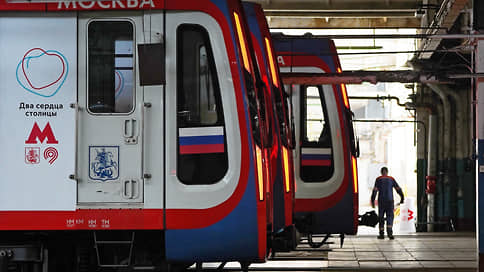What models of cars are used in the Moscow metro and what happens to outdated rolling stock
[ad_1]

Testing of a new generation train called “Moscow-2024” has begun in the capital’s metro, which should officially go on line this year. So far, passengers are carried by 6.5 thousand carriages of various modifications, including “Moskva”, “Oka”, “Rusich” and “classic” blue carriages produced in the late 1980s, which are sometimes called “Numbered”. What models of cars and on what lines are used today and what happens to trains that are taken out of service – in the review material “Kommersant”.
According to the data provided at the request of Kommersant by the capital’s metro, about 6.5 thousand cars of five series are operated as part of various electric trains.
A new carriage of the “Moscow-2024” type (essentially a restyling of the “Moscow-2020” modification with a new interior) has already been developed, assembly has begun, and it has recently entered the line announced Moscow Mayor Sergei Sobyanin. Videos of the new train have already appeared online. run in on the Zamoskvoretskaya line without passengers.
Trains 81–717/714 were the most popular series in the world, the capital’s metro said: they were the first to use fluorescent lighting and have emergency communication devices for passengers with the driver. Gradually they are becoming a thing of the past. At the end of last year, these cars, for example, completely left the Kaluzhsko-Rizhskaya line, they were replaced by more recent models “Oka”, “Moskva” and “Moscow-2020”. Recently, some of the decommissioned cars were restored and transferred to the Moscow Transport Museum, which is under construction (it will open in 2024) – these are historical models of type “B” (produced in 1926–1927), “G” (1939, 1940, 1947–1955), “Hedgehog” (1973–1977), “Numbered” and others. “Numbered” ones, by the way, continue to be used in the subways of Nizhny Novgorod, Samara, Novosibirsk, Yekaterinburg and other cities.
“At the end of their designated service life, cars are written off from the metro’s balance sheet in the established manner, followed by disposal,” the metro told Kommersant. “The number of cars to be disposed of depends on how many cars are retired during their service life in a given year. The Metro is interested in preserving our history, so not all cars are subject to decommissioning.
For example, in the Izmailovo electric depot, a collection of old cars that no longer carry passengers has been preserved. Passengers can see it during night excursions along the metro, and also take a ride on a working train with the very first type “A” metro car, produced from 1935 to 1976.”
Along with regular trains, various thematic trains regularly travel on the metro line (in connection with certain dates, events and anniversaries). In 2023, passengers along the BKL were carried by the Sokolniki retro train (created on the basis of Numbered, but looking like an A-type carriage), as well as by the Aquarelle train (based on Rusich) with reproductions of paintings, running along the Arbatsko- Pokrovskaya line.
In 2024–2025, the Moscow authorities plan to purchase more than 550 cars of the Moscow-2024 series, and by 2030 a total of 2.3 thousand new cars will be purchased. By this year, the authorities plan to renew 95% of the rolling stock (currently 74%). As the metro explained, special priority for several years will be given to the purchase of trains for the Zamoskvoretskaya line, as well as for new branches – Troitskaya and Biryulyovskaya (already under construction). This means that the “Numbered” lines will be in operation on the Lyublinsko-Dmitrovskaya and Sokolnicheskaya lines for quite some time.
“The fact is that simultaneously with the replacement of trains, new depot equipment, retraining of personnel, etc., are necessary,” Kirill Yankov, a member of the public council of the Ministry of Transport of Russia, head of the Passengers’ Union, explained to Kommersant. “Old trains have a service life of 35–40 years, and many younger than this period – Moscow is not so budgetary redundant that it can be written off ahead of schedule, a very limited number can be transferred to other metros, and Transmashholding (a rolling stock manufacturer.— “Kommersant”) has limited production capacity. On Lyublinsko-Dmitrovskaya, the “Numbered” ones are probably the newest, since it was introduced in the 1990s – it is logical that they last 35 years before being written off.”
In 2026–2030, Sergei Sobyanin said, the next generation of train is expected to be developed and put on line, which will be more spacious and, possibly, unmanned, but the mayor’s office has not yet disclosed other details.
[ad_2]
Source link








